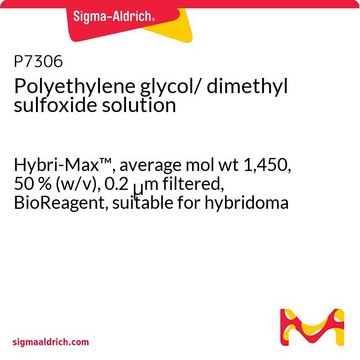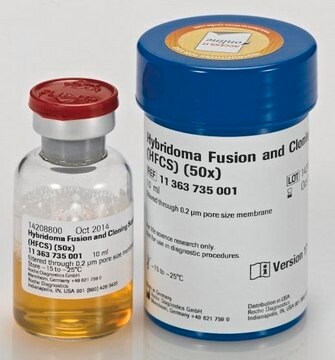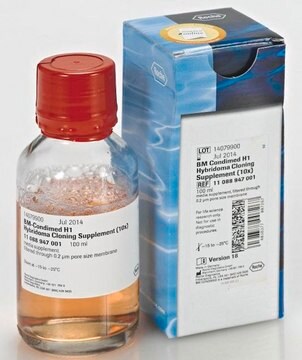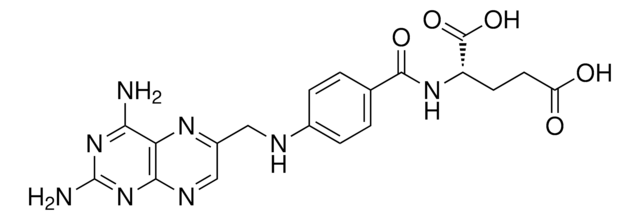P7181
Polyethylene glycol solution
Hybri-Max™, 50 % (w/v), average mol wt 1,450, 0.2 μm filtered, BioReagent, suitable for hybridoma
Synonyme(s) :
PEG Solution, Polyethylene Glycol
About This Item
Produits recommandés
Qualité
Hybri-Max™
Stérilité
0.2 μm filtered
Gamme de produits
BioReagent
Forme
solution
Poids mol.
average mol wt 1,450
Concentration
50 % (w/v)
Technique(s)
cell culture | hybridoma: suitable
Impuretés
endotoxin, tested
Température de stockage
2-8°C
Chaîne SMILES
C(CO)O
InChI
1S/C2H6O2/c3-1-2-4/h3-4H,1-2H2
Clé InChI
LYCAIKOWRPUZTN-UHFFFAOYSA-N
Catégories apparentées
Description générale
Application
- irradiated camel fibroblast cells with A23 hamster cells
- mouse splenocytes with Sp2/0-Ag 14 mouse myeloma cells
- rabbit splenocytes and cell line 240E-1
PEG is used as a fusogen to obtain hybridomas for monoclonal antibody production. Induces cell hybridization.
Actions biochimiques/physiologiques
Conditionnement
Autres remarques
Reconstitution
Informations légales
Code de la classe de stockage
10 - Combustible liquids
Classe de danger pour l'eau (WGK)
WGK 1
Point d'éclair (°F)
212.0 °F - closed cup
Point d'éclair (°C)
100 °C - closed cup
Équipement de protection individuelle
Eyeshields, Faceshields, Gloves, type ABEK (EN14387) respirator filter
Faites votre choix parmi les versions les plus récentes :
Déjà en possession de ce produit ?
Retrouvez la documentation relative aux produits que vous avez récemment achetés dans la Bibliothèque de documents.
Les clients ont également consulté
Notre équipe de scientifiques dispose d'une expérience dans tous les secteurs de la recherche, notamment en sciences de la vie, science des matériaux, synthèse chimique, chromatographie, analyse et dans de nombreux autres domaines..
Contacter notre Service technique




